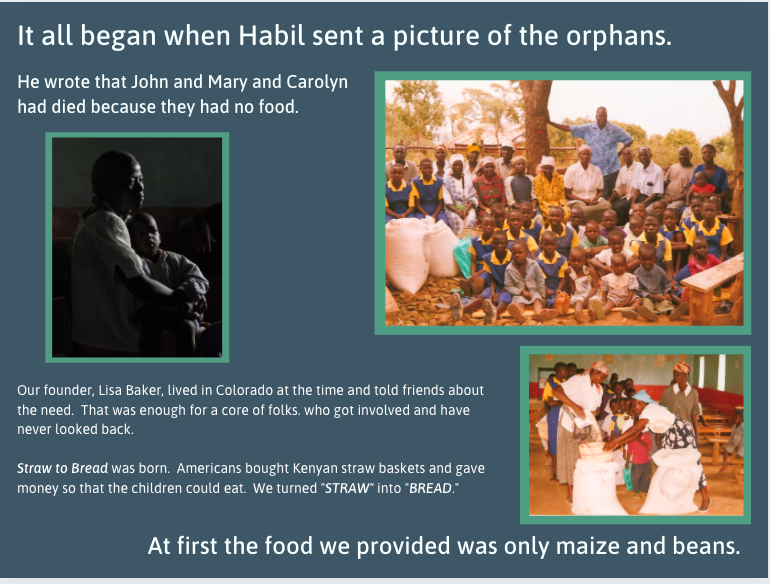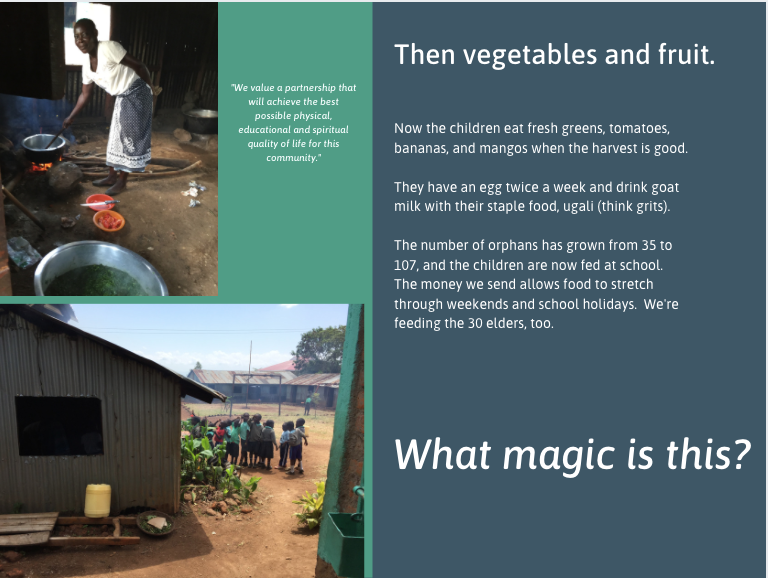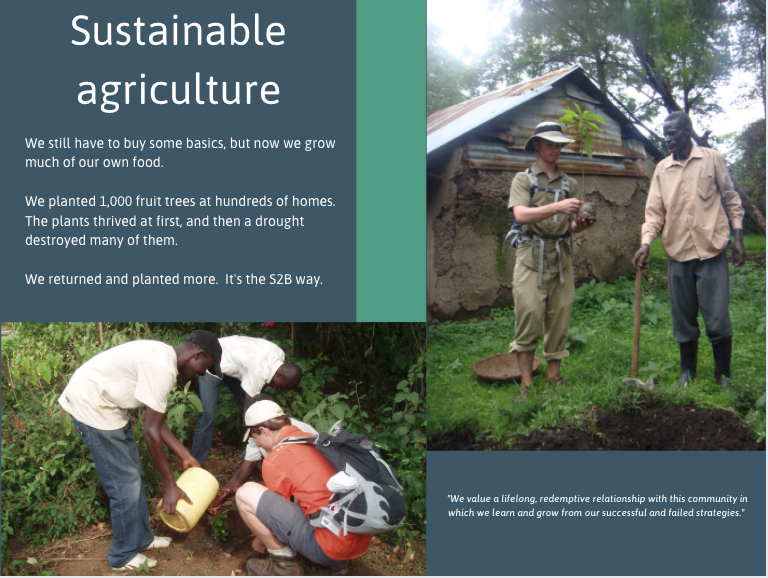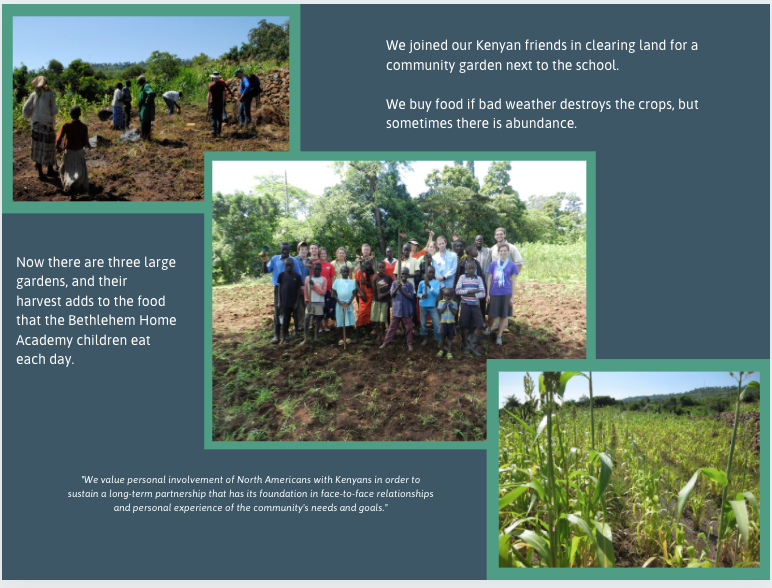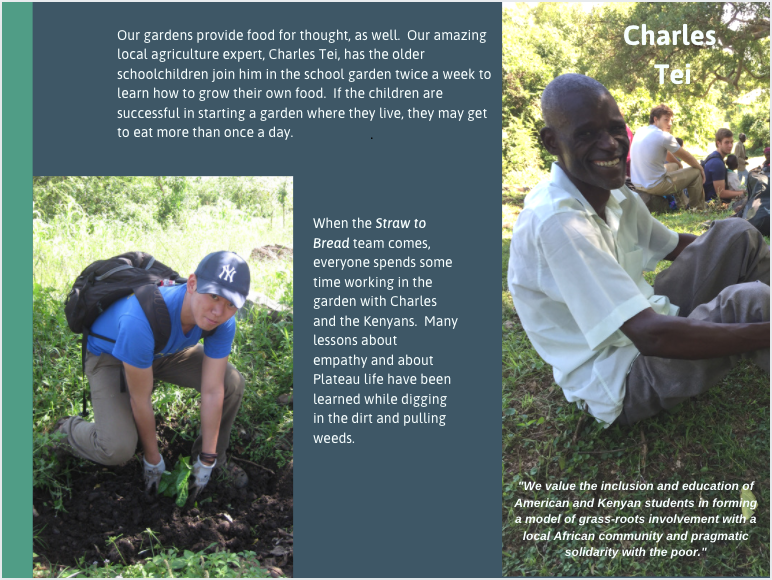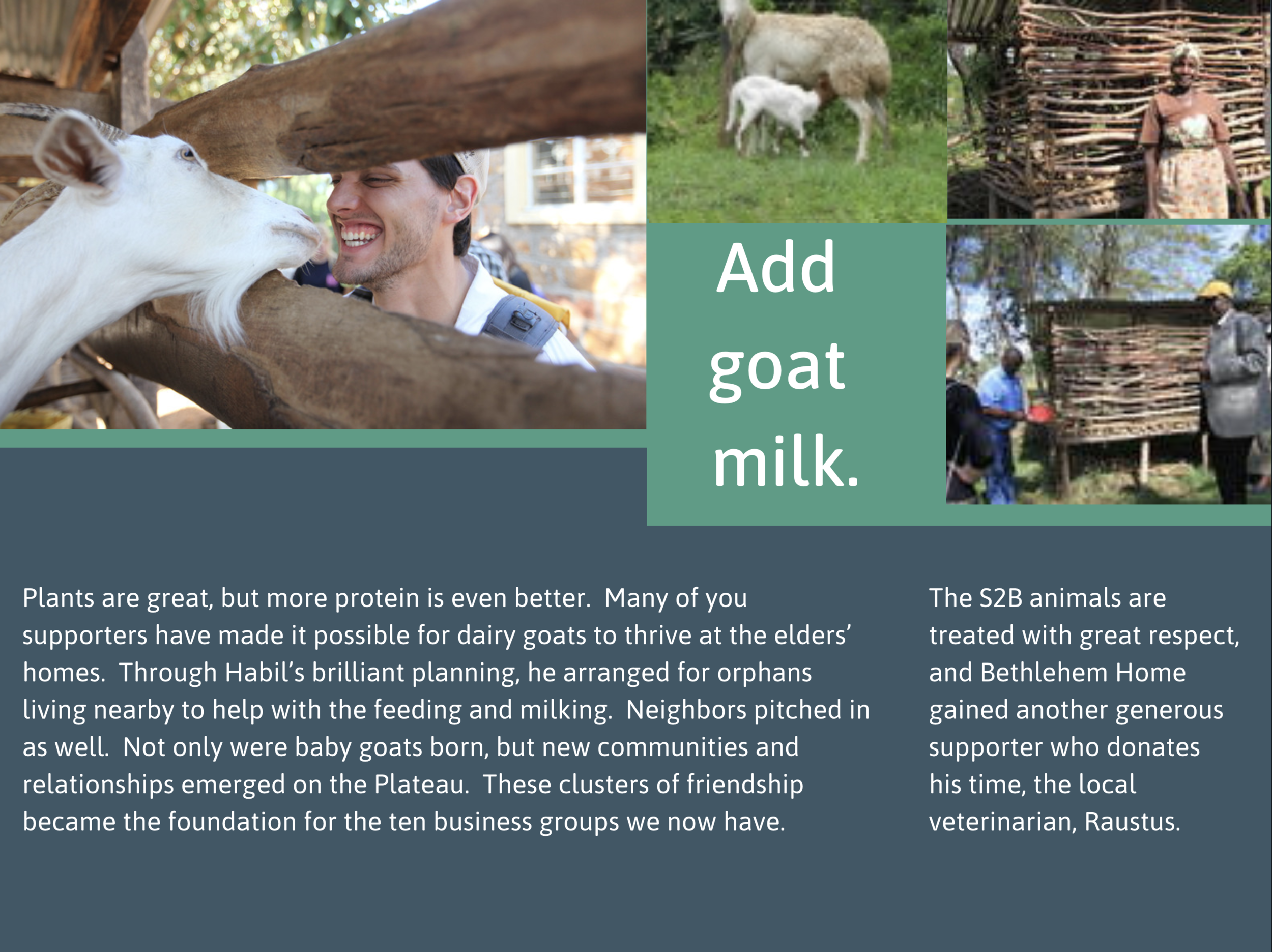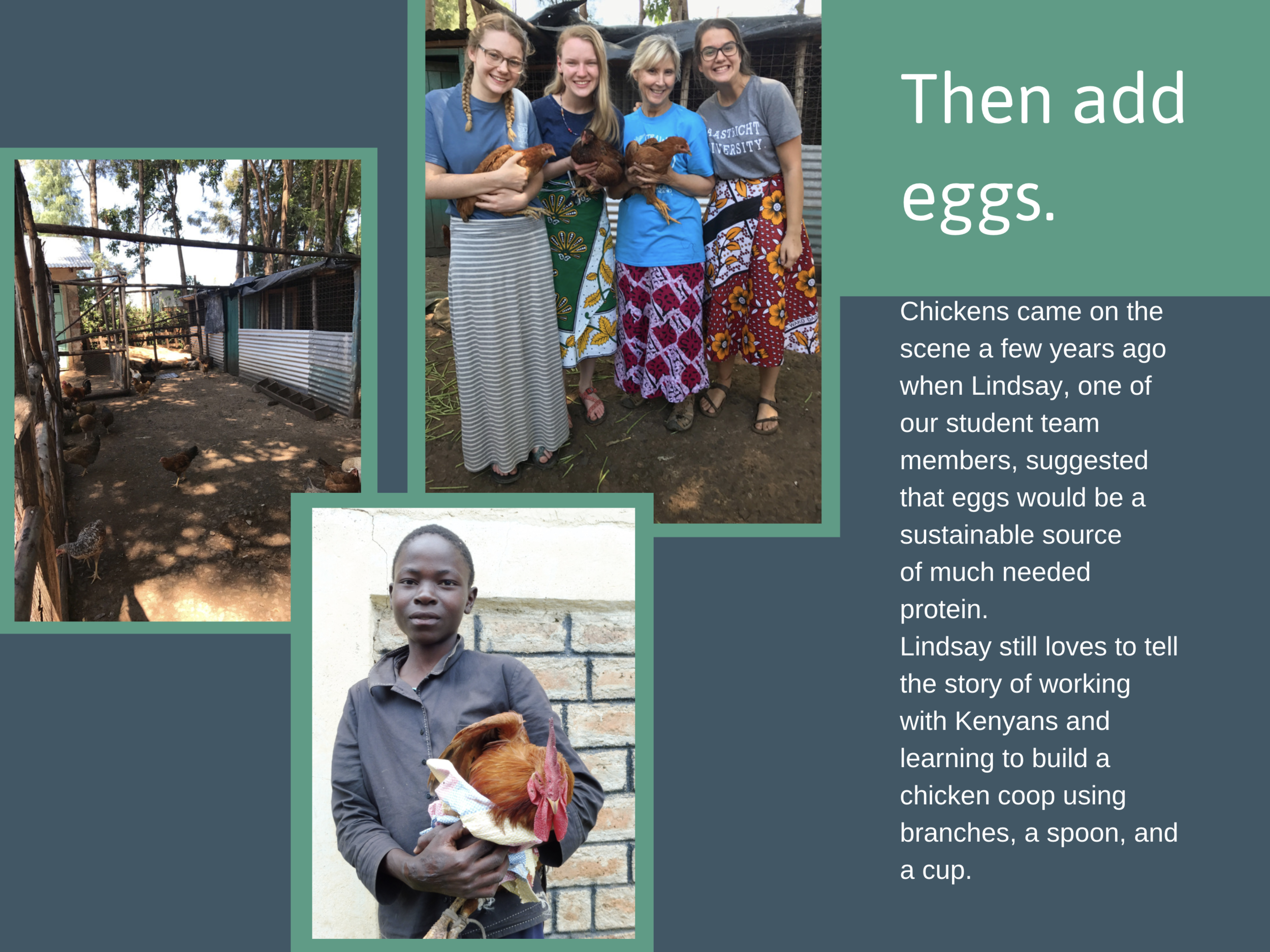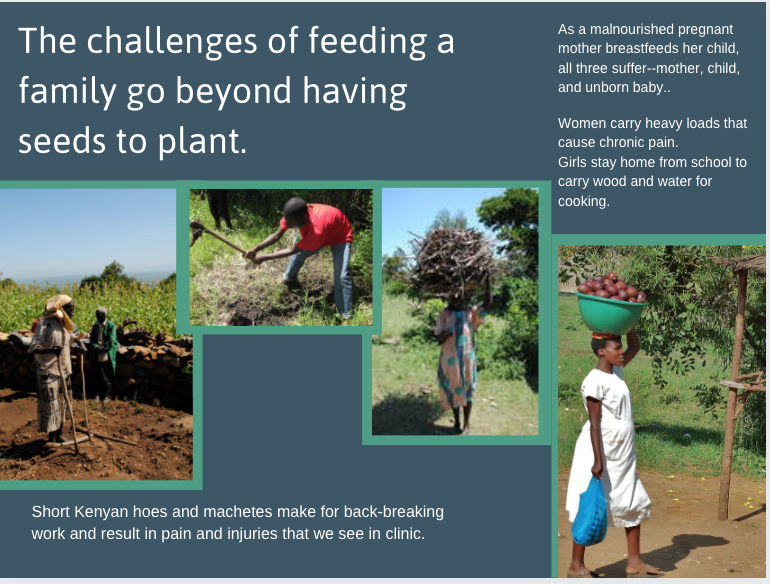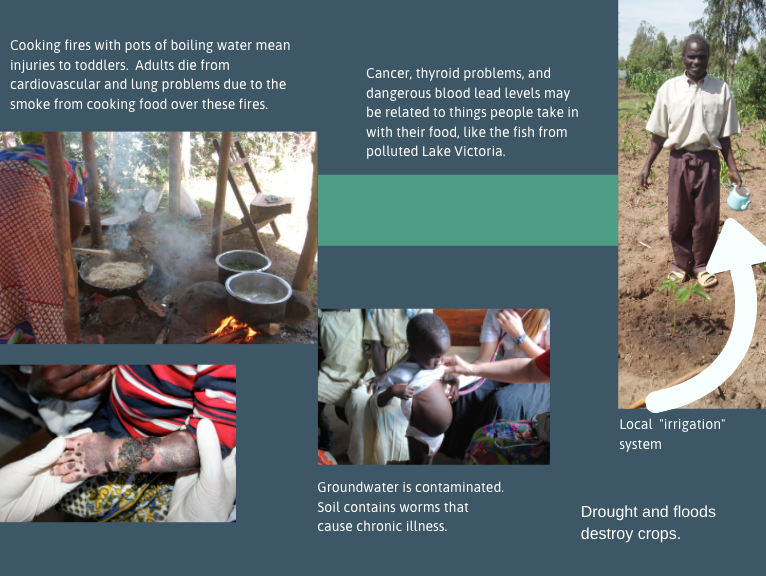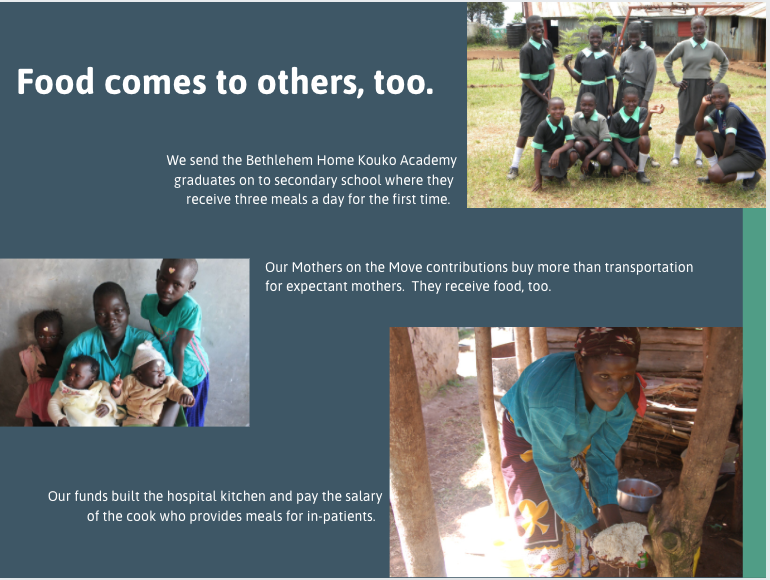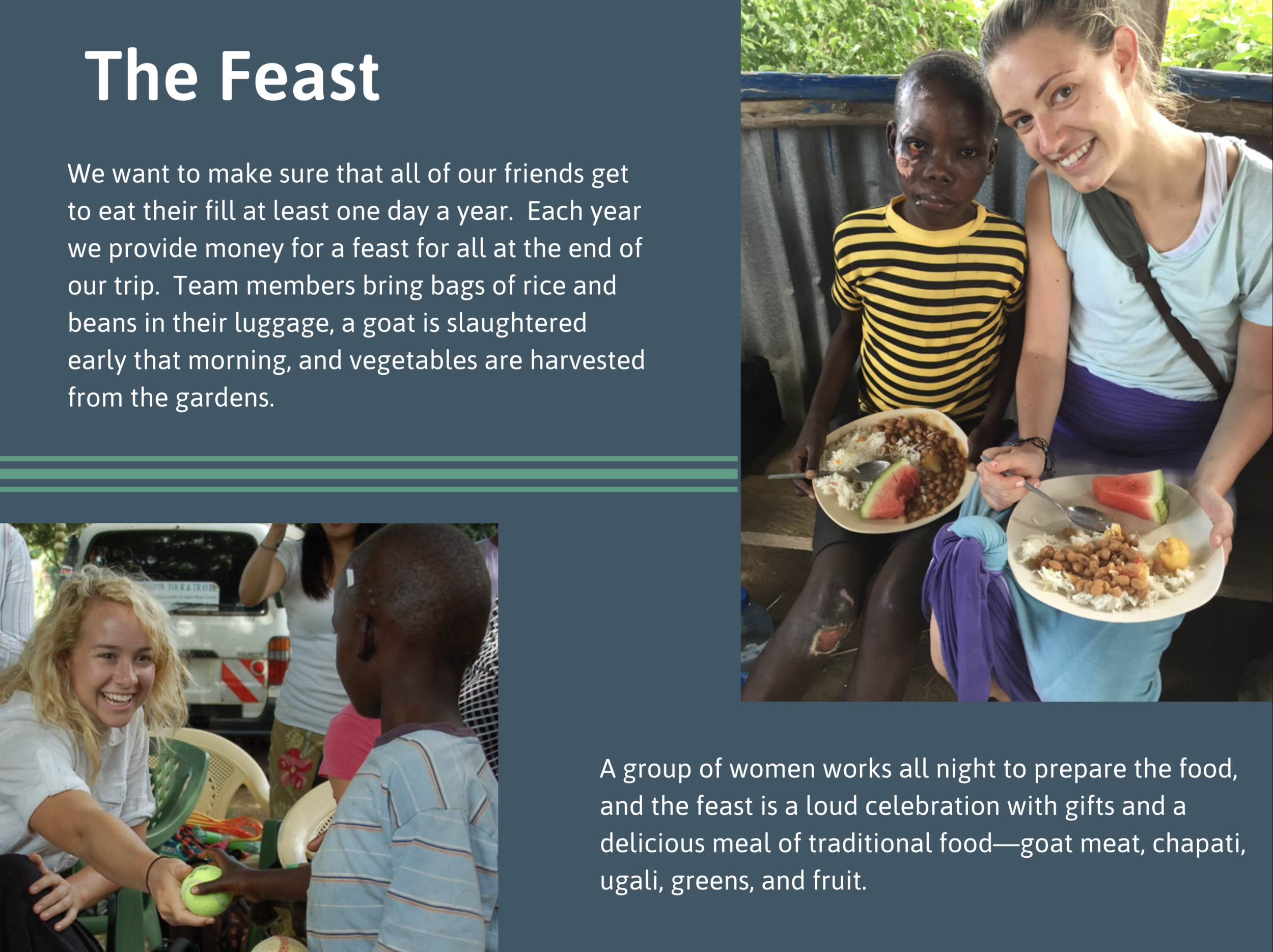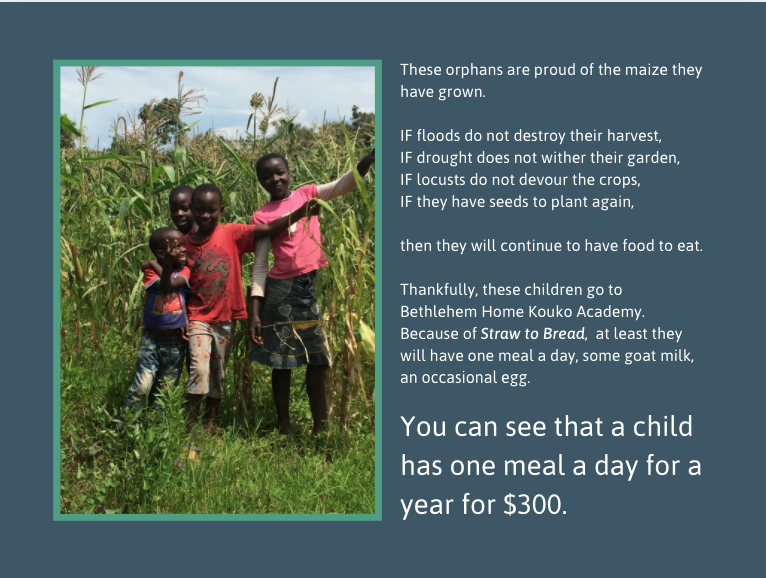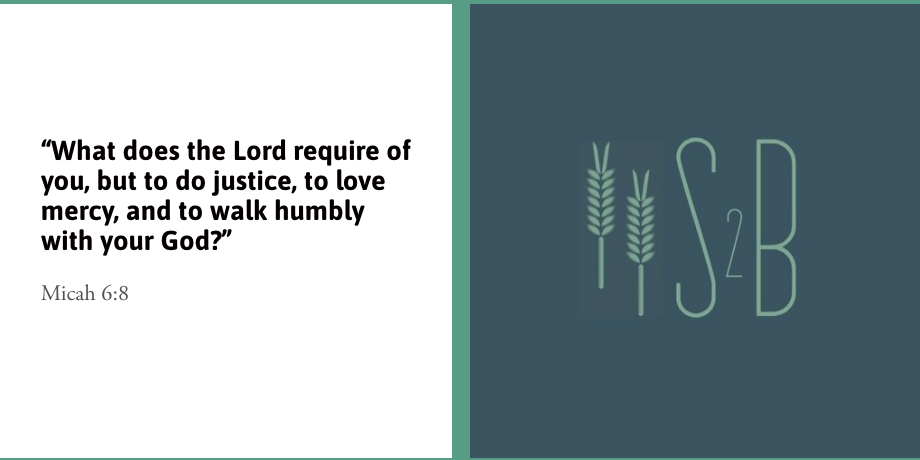food security—the most basic challenge
One of our Bethlehem Home orphans having lunch at school
There are times of crisis—droughts, floods, pandemics—when Straw to Bread directly provides money for buying food and water to keep people from dying. But from the beginning, we worked with the local agriculture and veterinary experts on long-term strategies, like planting fruit trees and gardens, providing dairy goats and chickens, and teaching schoolchildren how to grow their own food. We quickly learned that feeding a family involves much more than growing crops.
Here’s how it unfolded.
A Bit of History
When Kenya gained its independence from Britain in 1963, there were two changes that would mark the economy and growth of Kenya for generations. “White-collar” colonizers devalued farming as a profession and modeled the belief that the only jobs worth having were desk jobs in an urban area. The second change grew out of the decision by the newly independent Kenyan government to redistribute the land regained from the British and to give every family a plot of land.
This unique set of influences has played out over the last 60 years, and Straw to Bread now finds itself working in a rural area where 1) virtually all of the orphans and elders have a plot of land; 2) subsistence farming is the main source of food, but has been inadequate; 3) farming is viewed as a necessary activity, but it does not have social value or high status. Coming from the U.S., where backyard and community gardens are flourishing and where “shop local” is the trend in buying food, we now have a partnership in Kenya to increase the yield, perception of value, and training of schoolchildren to be local farmers with sustainable methods.
When we go to visit each year, part of our time is spent digging new gardens with the Kenyans, pulling weeds or planting trees, building a chicken coop, and buying goats to give to our Luo friends.
You can see more here.



